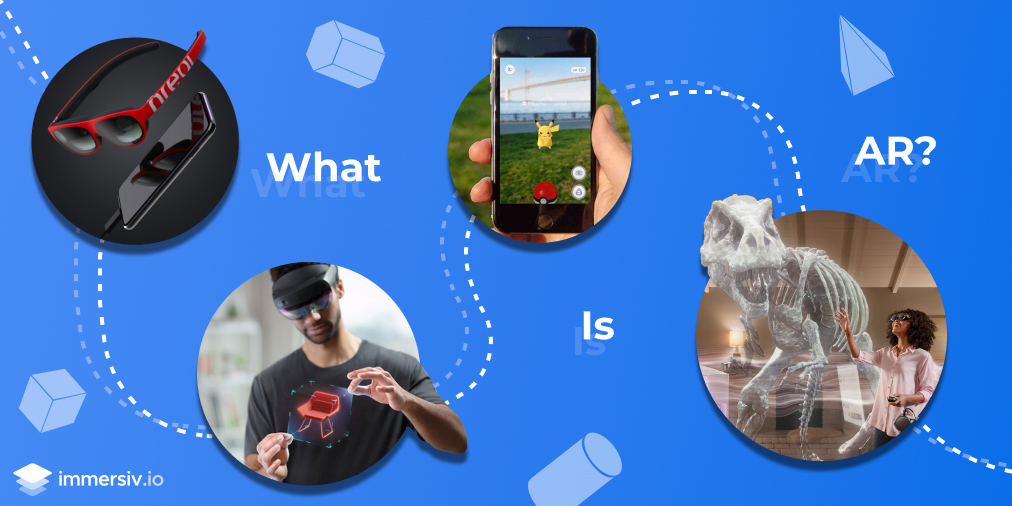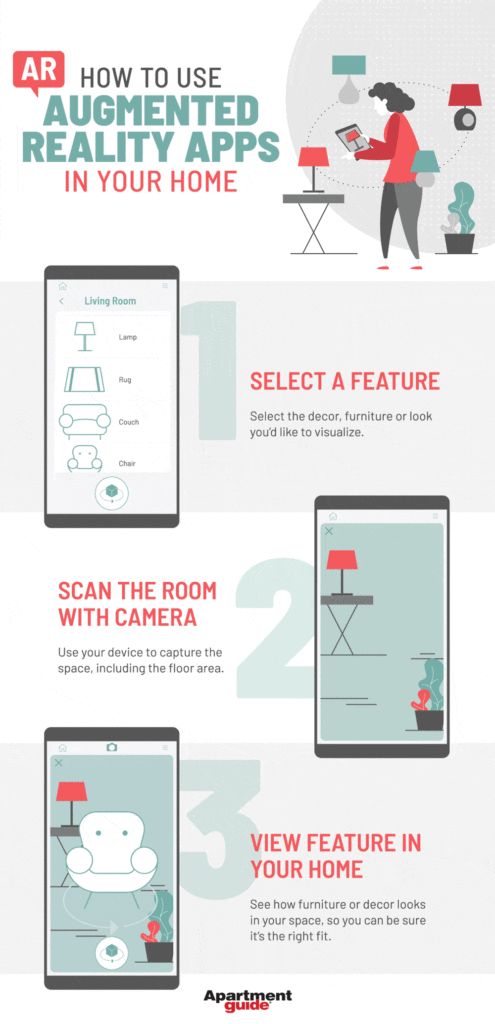As technology continues to advance, so do the ways in which we interact with it. One of the most exciting and innovative developments in recent years has been the rise of augmented reality. Augmented reality, or AR, is a technology that overlays digital information onto the real world, creating a hybrid reality that blends the virtual and physical worlds together seamlessly. But what does augmented reality do, exactly?
At its core, augmented reality is all about enhancing our experiences and interactions with the world around us. By adding a layer of digital information onto the physical world, AR can help us see things in new ways, learn more about our surroundings, and even interact with virtual objects as if they were right in front of us. From gaming and entertainment to education and business, augmented reality has the potential to revolutionize the way we live, work, and play. But how does it all work, and what can we expect from this exciting new technology in the years to come?
Augmented reality (AR) is a technology that superimposes computer-generated images on top of the real-world environment. It enables users to interact with digital objects in their everyday environment in an immersive way, by using their smartphones or other devices. AR can be used to enhance gaming experiences, provide guidance in real-world applications, enhance shopping experiences, and much more.

What is Augmented Reality?
Augmented reality (AR) is a technology that combines digital objects and information with the real world. AR can be used to enhance and improve many aspects of everyday life, from entertainment to education and beyond. AR technology is becoming increasingly popular and widely used, with applications ranging from gaming to navigation to entertainment.
AR is a type of virtual reality, which is the use of computer-generated images or environments to simulate a real-life experience. The difference between AR and virtual reality is that AR adds digital content to the real world rather than replacing it. This allows users to interact with the real world and experience augmented reality.
How Does Augmented Reality Work?
Augmented reality combines digital elements such as graphics, audio, and video with the real world. This is accomplished through the use of sensors, cameras, and other devices that can detect physical objects and the environment. When the device detects an object or environment, it will generate a digital overlay to provide additional information or enhance the user experience.
The main components of AR technology include the hardware, which includes the sensors and cameras, and the software, which includes the applications and the AR frameworks. The hardware is responsible for capturing the real-world environment and the software is responsible for creating the augmented reality experience.
Applications of Augmented Reality
Augmented reality can be used in a wide range of applications, from gaming and entertainment to education and navigation. AR can be used to enhance the user experience in gaming by adding digital elements such as graphics, audio, and video to the physical environment. In entertainment, AR can be used to create interactive experiences such as virtual tours and interactive movies.
In education, AR can be used to create interactive learning experiences, allowing students to interact with digital objects in the physical environment. AR can also be used for navigation, allowing users to see directions or markers in the physical environment to help them find their way.
Benefits of Augmented Reality
Augmented reality has many benefits, from enhancing the user experience to providing more accurate information. AR can provide a more immersive experience by adding digital elements to the physical environment, allowing users to interact with the environment in a more natural way. AR also allows users to access more accurate information in real-time, as the digital content is layered on top of the physical environment.
AR can also be used to improve safety by providing real-time information and alerts in hazardous situations. AR can also be used to improve efficiency in the workplace, allowing workers to access real-time information and instructions while on the job.
Future of Augmented Reality
The future of augmented reality is bright, with many new applications and uses being developed and explored. AR technology is becoming increasingly accessible and widely used, and is being used to improve many aspects of everyday life. As the technology continues to evolve, more and more applications will be developed, and the possibilities of what AR can do will continue to grow.
Frequently Asked Questions
Augmented reality is a technology that merges digital objects into the real world. It is used to create a more immersive experience for users, and can be used to enhance a range of activities from gaming to shopping to education.
What is Augmented Reality?
Augmented reality (AR) is a technology that blends digital objects with the physical world. It is used to create an enhanced user experience by overlaying digital objects onto the physical world. This could be anything from a 3D game character to a virtual shopping assistant. AR utilizes various technologies such as GPS, image recognition, and 3D rendering to create an interactive experience for users.
How does Augmented Reality work?
Augmented reality works by using sensors and cameras to detect physical objects in the environment. This data is then used to create digital objects that are overlaid onto the physical objects. For example, a user may see a virtual character walking through a park. This character is actually a digital object that is being overlaid onto the physical world. AR also utilizes GPS and image recognition to track the user’s location in the physical world and to recognize objects in the environment.
What are the benefits of Augmented Reality?
The benefits of augmented reality are numerous. AR can be used to create a more immersive and engaging user experience for a variety of activities. For example, in gaming, AR can be used to create a more realistic environment for players. Additionally, AR can be used for educational purposes, allowing students to interact with virtual objects in the physical world. Finally, AR can be used in retail to allow customers to interact with products before they buy them.
What are the challenges of Augmented Reality?
Despite its many benefits, augmented reality does come with some challenges. One of the biggest challenges is the accuracy of the data. As AR relies on sensors and cameras to detect physical objects, if the data is not accurate then the virtual objects will not be accurately overlaid onto the physical world. Additionally, AR can be expensive to implement, as it requires specialized hardware and software.
Where is Augmented Reality used?
Augmented reality is used in a variety of industries and applications. It is used in gaming to create more immersive experiences, in education to teach students about virtual objects, and in retail to allow customers to interact with products before they buy them. Additionally, AR is used in a variety of other industries such as healthcare, aerospace, construction, and manufacturing.
In conclusion, augmented reality has become an indispensable technology that has transformed the way we experience the world around us. With its ability to blend the real and virtual worlds seamlessly, it has enabled us to explore new possibilities across various industries, from gaming and entertainment to education and healthcare. Augmented reality has made it possible for us to interact with digital content in a more immersive and engaging way, making it a powerful tool for businesses and individuals alike.
As we continue to explore the potential of augmented reality, it is clear that it has a bright future ahead. With advancements in technology, we can expect to see even more innovative use cases for this technology in the coming years. From enhancing our daily lives to revolutionizing the way we work and learn, augmented reality is transforming the world as we know it. As such, it is crucial that we continue to invest in the development of this technology and explore its full potential to unlock new opportunities and possibilities for the future.



Your writing has a way of making complicated topics easier to understand It’s evident how much research and effort goes into each post
Let me know what type of content you’d like to see more of in the future!
I love how this blog covers a variety of topics, making it appeal to a diverse audience There is something for everyone here!
Your blog post was really enjoyable to read, and I appreciate the effort you put into creating such great content. Keep up the great work!
Your words have a way of resonating deeply with your readers Thank you for always being encouraging and uplifting
Your words are powerful and have the ability to make a real difference in people’s lives Keep using your voice to spread positivity and knowledge
Keep up the incredible work! I can’t wait to see what you write next.
This blog is such a hidden gem I stumbled upon it by chance and now I’m completely hooked!
This is exactly what I needed to read today Your words have given me a new perspective and renewed hope Thank you
Your posts are always so relevant and well-timed It’s like you have a sixth sense for what your readers need to hear
I have recommended this blog to all of my friends and family It’s rare to find such quality content these days!
Your blog has become my go-to source for inspiration and motivation Thank you for consistently delivering high-quality content
Your words have the power to change lives and I am grateful for the positive impact you have had on mine Thank you
Let us know in the comments which of their posts has resonated with you the most. https://foodrecipeai.com